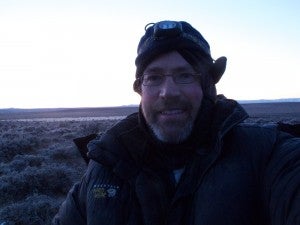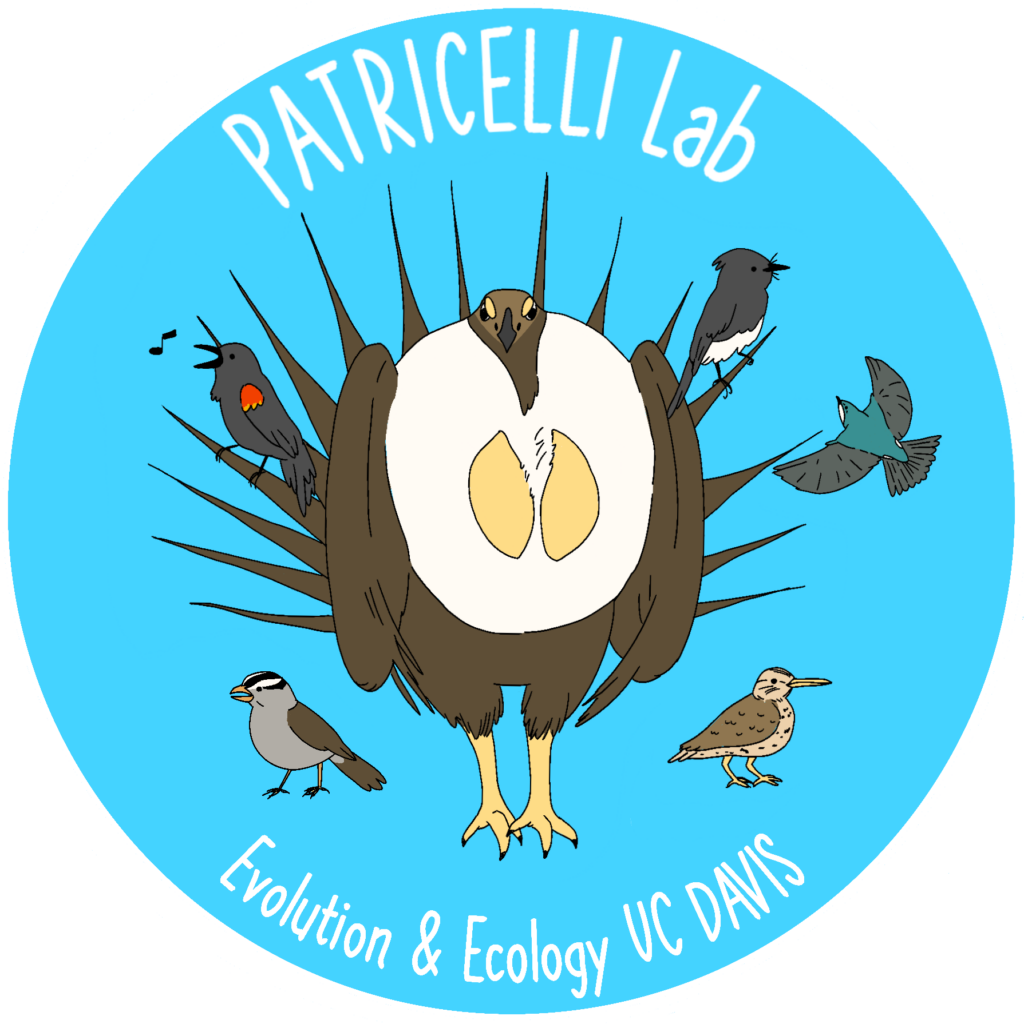Alan is broadly interested in organismal evolution, particularly in the evolution of cooperation, sexual selection, and signaling systems. Much of his work involves the study of complex avian mating systems as a way to understand the relationship between the social, biotic, and physical environment and individual behavioral strategies. For example, we expect males to compete vigorously in many polygynous breeding systems, so why do we see cooperative behavior emerge in some species, and what factors might explain why these cooperative strategies differ across taxa? Additionally, much of the foundational work on sexual selection has focused on static traits, yet one only has to watch animal courtship for a brief time to see the interactive nature of this process. So how and why do males vary their courtship displays in response to the changes in their environment, and is the ability to express variation in itself important for fitness? He addresses these and other questions using a variety of field and lab techniques, including molecular estimates of relatedness and parentage, multi-channel microphone arrays, high-definition video, photography, playback experiments, and radiotelemetry. He has mentored more than 200 undergraduate research assistants and post-graduate field technicians during the course of these projects.
Links
Alan’s Current Webpage: http://www.alankrakauer.org/
Google Scholar: http://scholar.google.com/citations?user=qbDNNZ8AAAAJ&hl=en
ResearchGate: http://scholar.google.com/citations?user=qbDNNZ8AAAAJ&hl=en
LinkdIn: www.linkedin.com/pub/alan-krakauer/82/826/554/
Flickr Page: https://www.flickr.com/photos/12341100@N06/sets/
YouTube Page: https://www.youtube.com/user/ahkrakauer/videos
Alan’s Publications
Ríos-Chelén, Ambria N. McDonald, Ayala N. Berger, Anna C. Perry, Alan H. Krakauer, and Gail L. Patricelli. 2017. Do birds vocalize at higher pitch in noise, or is it a matter of measurement? Behavioral Ecology & Sociobiology. 71: 29. doi:10.1007/s00265-016-2243-7. LINK
Forbey, Jennifer S., G. L. Patricelli, D. M. Delparte, A. H. Krakauer, P. J. Olsoy, M. R. Fremgen, J. D. Nobler, L. P. Spaete, L. A. Shipley, J. L. Rachlow, A. K. Dirksen, A. Perry, B.A. Richardson, N.F. Glenn. 2017. Emerging Technology to Measure Habitat Quality and Behavior of Grouse. Wildlife Biology. wlb.00238. 2017 LINK
Fremgen, Marcella R., Daniel Gibson, Rebecca L. Ehrlich, Alan H. Krakauer, Jennifer S. Forbey, Erik J. Blomberg, Jim S. Sedinger, Gail L. Patricelli. 2017. Necklace-style radio-transmitters are associated with changes in display vocalizations of male Greater Sage-grouse. Wildlife Biology. wlb.00236. 2017
Patricelli, Gail L., A. H. Krakauer, C. C. Taff. 2016. Variable signals in a complex world: Shifting views of within-individual variability in sexual display traits. Advances in the Study of Behavior 48: 319-386. LINK
Krakauer, Alan H., Melissa A. Blundell, Tawny N. Scanlan, Michelle S. Wechsler, Emily A. McCloskey, Jennifer H. Yu, Gail L. Patricelli. 2016. Successfully mating male sage-grouse show greater laterality in courtship and aggressive interactions. Animal Behaviour 111: 261–267. LINK
Koch, Rebecca E., Krakauer, Alan H., & Patricelli, Gail L. accepted. Investigating female mate choice for mechanical sounds in the male Greater Sage-Grouse. The Auk: Ornithological Advances.
Diaz-Muñoz, Samuel. et al., 2014. Cooperating to compete: altruism, sexual selection and causes of male reproductive cooperation. Animal Behaviour 88: 67-78.
Pellis, Sergio. M., et al., 2013. Drawn into the vortex: The facing-past encounter and combat in lekking male greater sage-grouse (Centrocercus urophasianus). Behaviour 150: 1567-1599. PDF
Benedict, Lauryn. & Krakauer, Alan H. 2013. Kiwis to Peewees: the value of studying bird calls. Ibis. 155: 225-228.
Gibson, Daniel, et al., 2013. Effects of radio collars on male sage-grouse survival and lekking behavior. Condor 115: 769-776. PDF
Blickley, Jessica et al., 2012. Experimental chronic noise is related to elevated fecal corticosteroid metabolites in lekking male greater sage-grouse (Centrocercus urophasianus). PLoS One 7: article e50462. PDF
Krakauer, Alan H., Webster, Michael S., DuVal, Emily H., Jones, Adam G., & Shuster, Stephen M. 2011. The opportunity for sexual selection: not mismeasured, just misunderstood. Journal of Evolutionary Biology. 24: 2064-71.
Patricelli, Gail L., Krakauer, Alan H., & McElreath, Richard. 2011. Assets and tactics in a mating market: economic models of negotiation offer insights into animal courtship dynamics. Current Zoology. 57: 225-236. PDF
Krakauer, Alan H. & DuVal, Emily H. 2011. Kin selection and cooperative courtship in birds. In C.A. Salmon and T.K. Shackelford (eds.), The Oxford Handbook of Evolutionary Family Psychology. New York: Oxford University Press.
Blumstein, Daniel T. et al., 2011. Acoustic monitoring in terrestrial environments: applications, technological considerations, and prospectus. Journal of Applied Ecology. 48: 758-767. PDF
Patricelli, Gail.L. & Alan H. Krakauer. 2010. Tactical allocation of display effort reduces trade-offs among multiple sexual signals in greater sage-grouse: an experiment with a robotic female. Behavioral Ecology 21: 97-106. PDF
Krakauer, Alan H., et al., 2009. Vocal and anatomical evidence for a two-voiced system in the greater sage-grouse (Centrocercus urophasianus). Journal of Experimental Biology 212: 3719-3727.
Koenig, Walter D., et al., 2009. Mast-producing trees and the geographical ecology of Western Scrub Jays. Ecography 32: 561-570.
Krakauer, Alan .H. & Kimball, Rebecca.T. 2009. Interspecific brood parasitism in galliform birds. Ibis 151: 373-381.
Koenig, Walter D., et al., 2009. Reproductive skew in avian societies. Pp. 227-264 in (R. Hager, and C.B. Jones, eds) Reproductive Skew in Vertebrates: Proximate and Ultimate Causes, Cambridge University Press, Cambridge.
Krakauer, Alan H. 2008. Sexual selection and the genetic mating system of Wild Turkeys. Condor 110(1): 1-12.
Kuchta, Sean R., Krakauer, Alan .H., & Sinervo, Barry. 2008. Why does the Yellow-eyed Ensatina have yellow eyes? Batesian mimicry of rough-skinned newts (genus Taricha) by by the salamander Ensatina eschscholtzii xanthoptica. Evolution 62: 984-990.
Krakauer, Alan H. 2005. Kin selection and cooperative courtship in wild turkeys. Nature 434:69-72.
Krakauer, Alan H. 2003. California Quail lays egg in Wild Turkey nest. Western Birds 34:169-170.
Adkins-Regan, Elizabeth & Krakauer, Alan. 2000. Removal of adult males from the rearing environment increases preference for same sex partners in the zebra finch (Taeniopygia guttata). Animal Behaviour 60: 47-53.
Walcott, Charles, Evers, David, Froehler, Michael, & Krakauer, Alan. 1999. Individuality in “Yodel” calls recorded from a banded population of Common Loons (Gavia immer). Bioacoustics, 10: 101-114.
Krakauer, Alan H. & Krakauer, Thomas H. 1999. Foraging of Yellow-headed Caracaras in the fur of a three-toed sloth. Journal of Raptor Research 33: 270.
Tauber, Catherine A. & Krakauer, Alan H. 1997. Larval characterisitcs and generic placement of endemic Hawaiian Hemerobiids (Neuroptera). Pacific Science 51: 413-423.
Krakauer, Alan H. & Tauber, Catherine A. 1996. Larvae of Micromus, generic characteristics and a description of Micromus subanticus (Neuroptera: Hemerobiidae). Annals of the Entomological Society of America 89: 203-211.
Back to the Postdocs page

